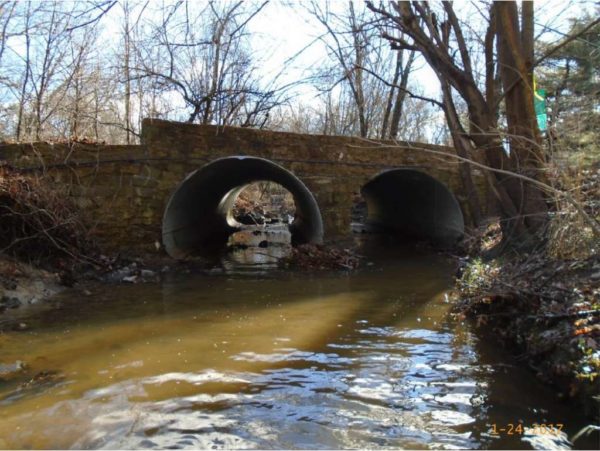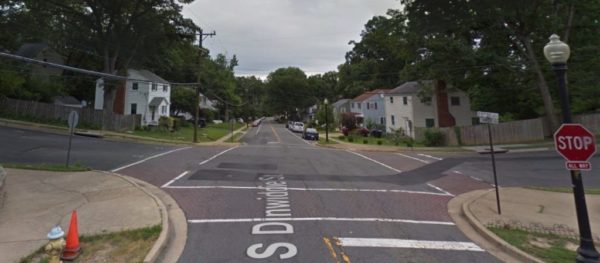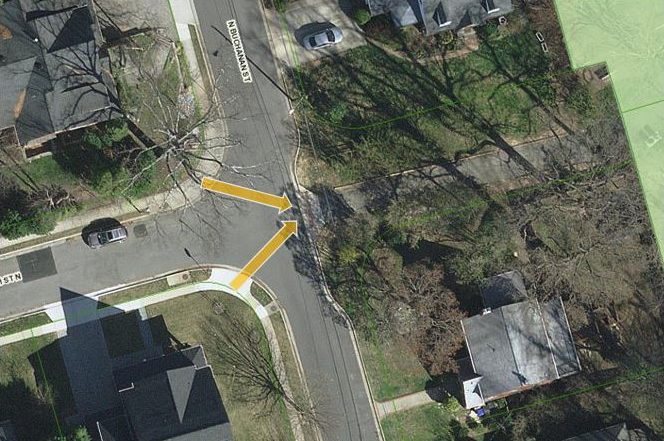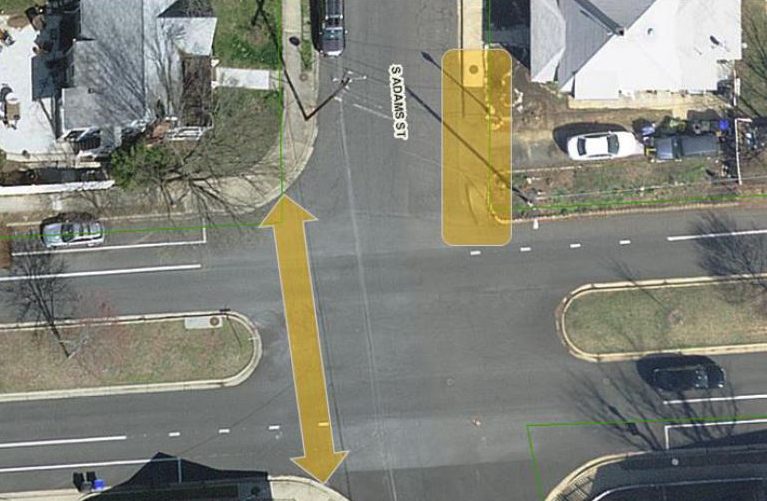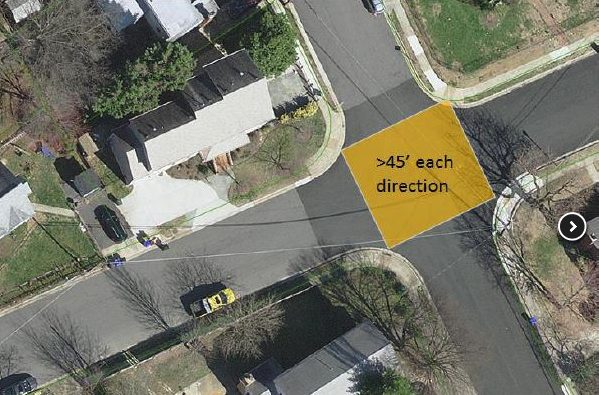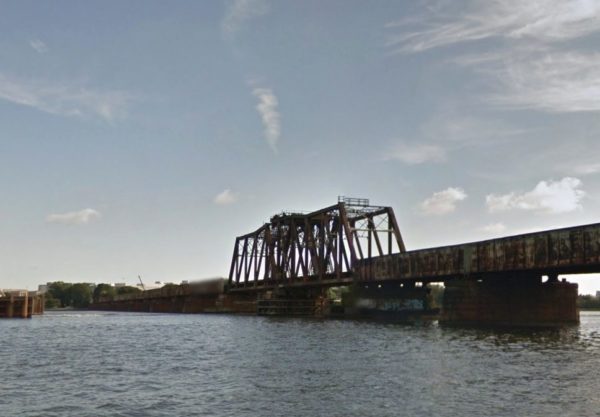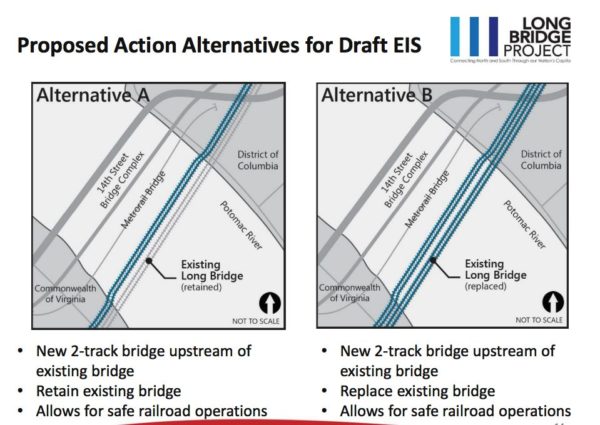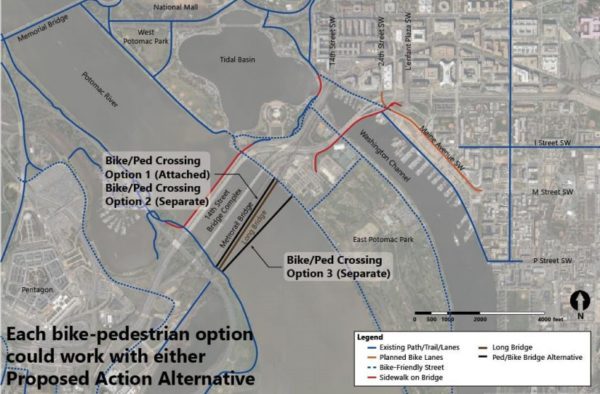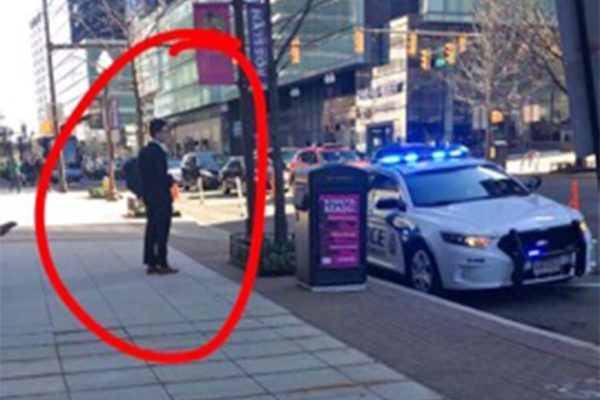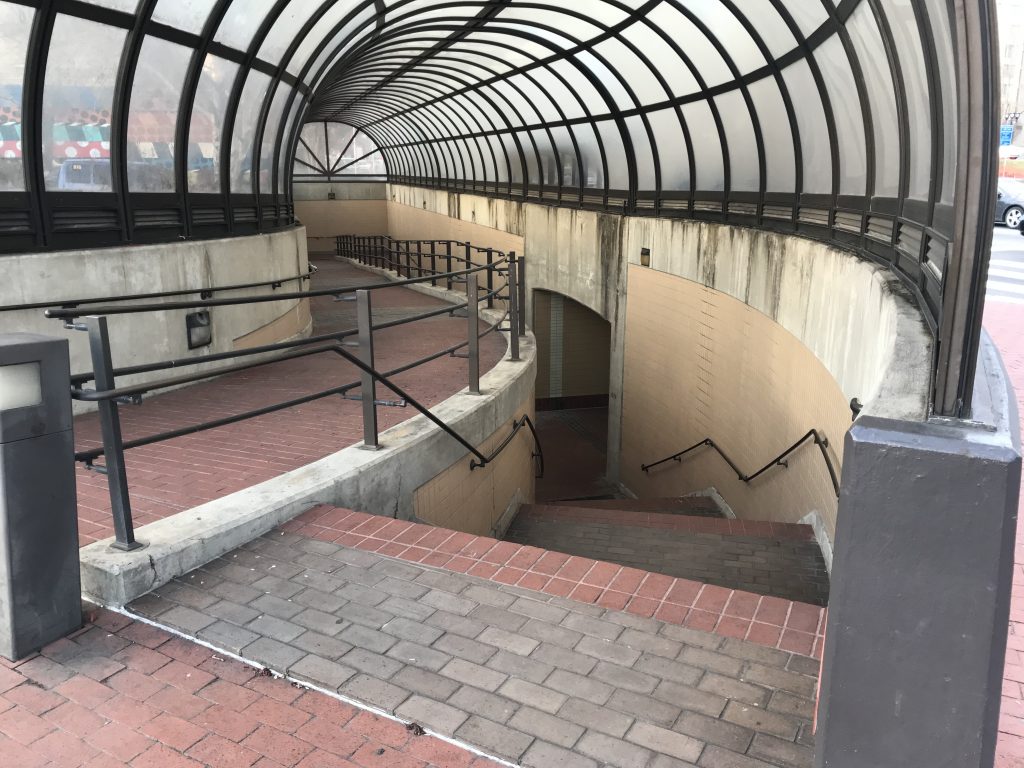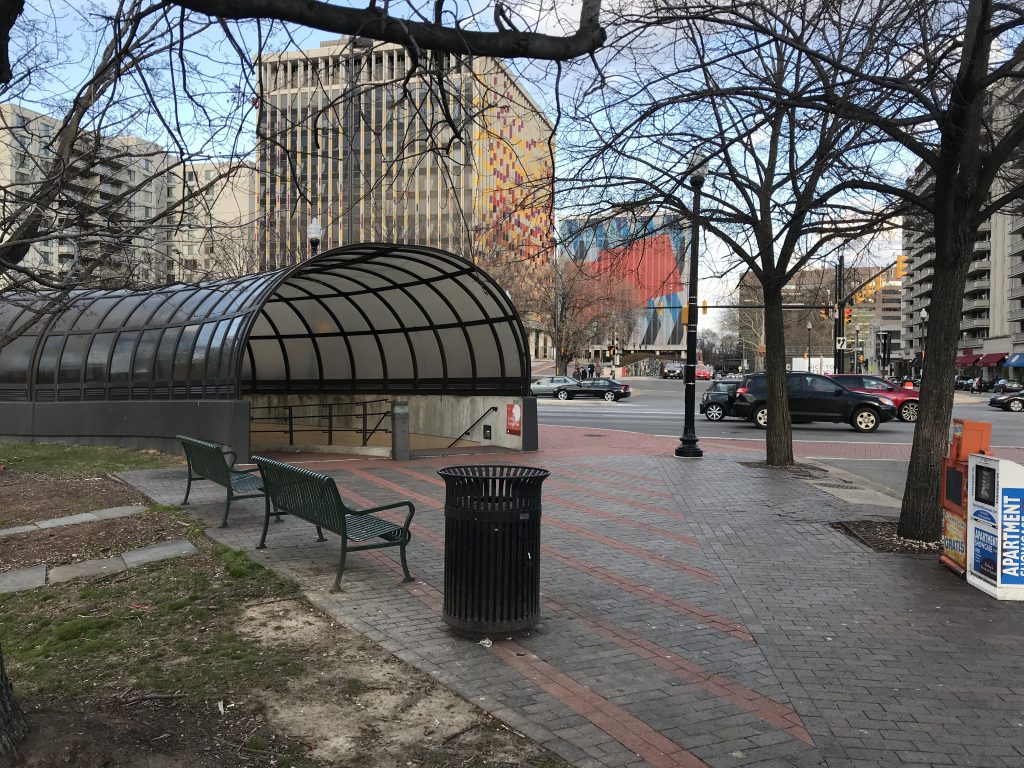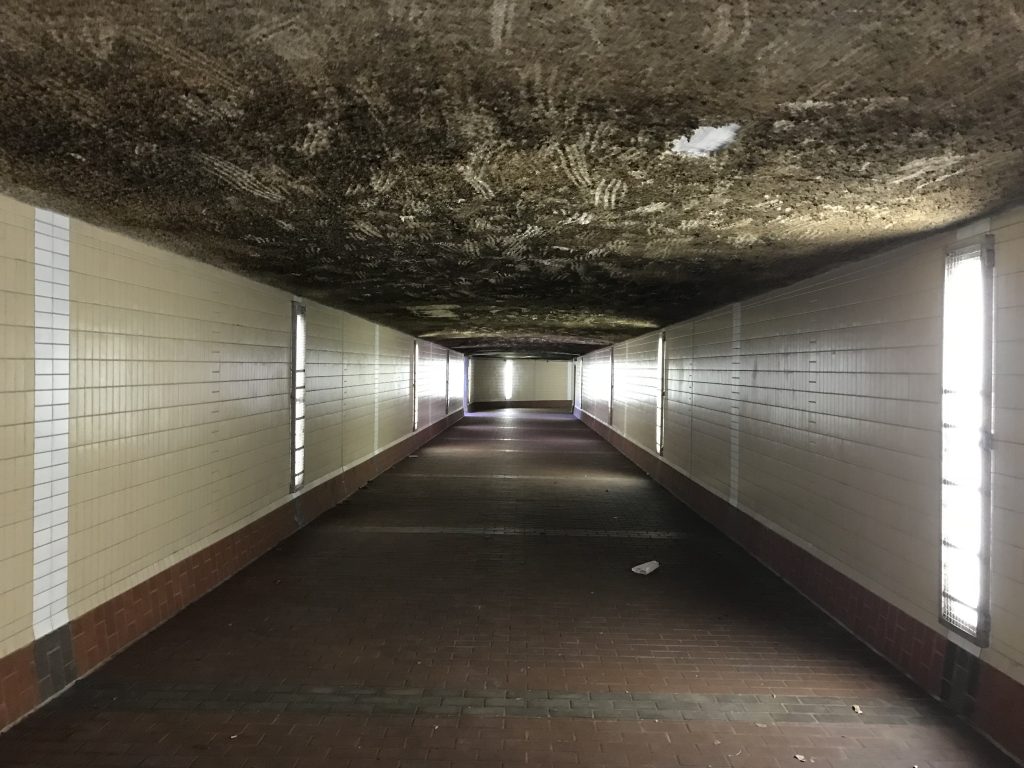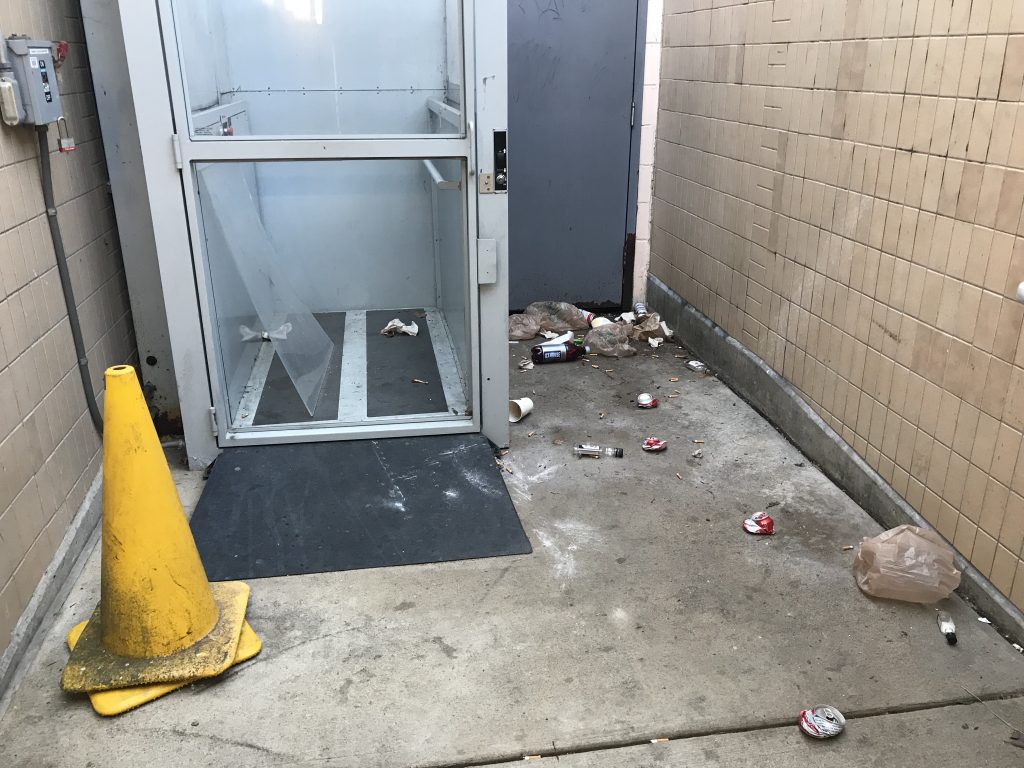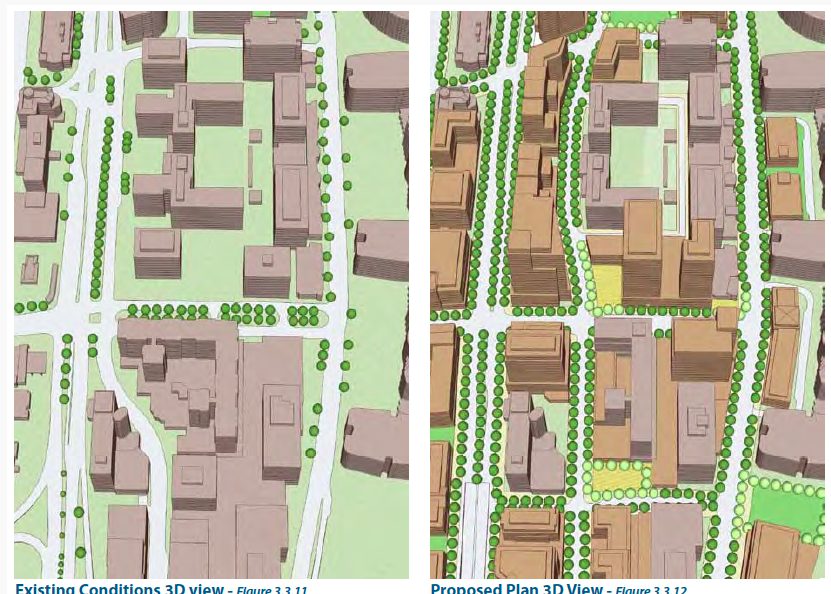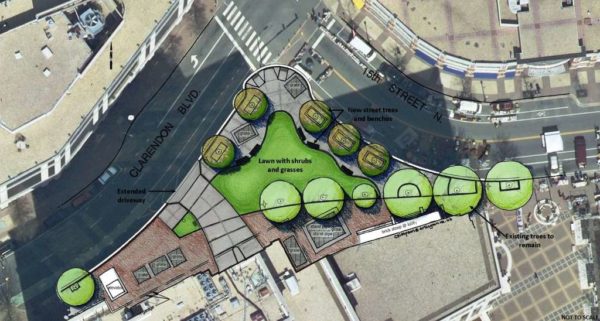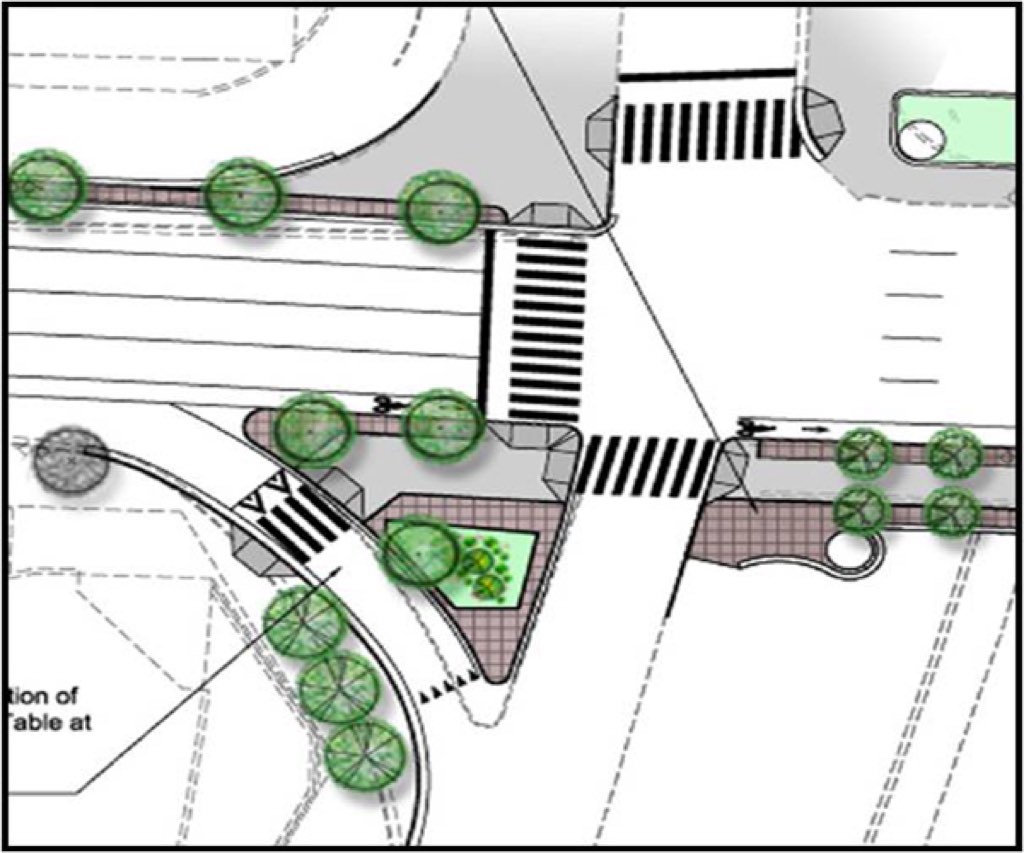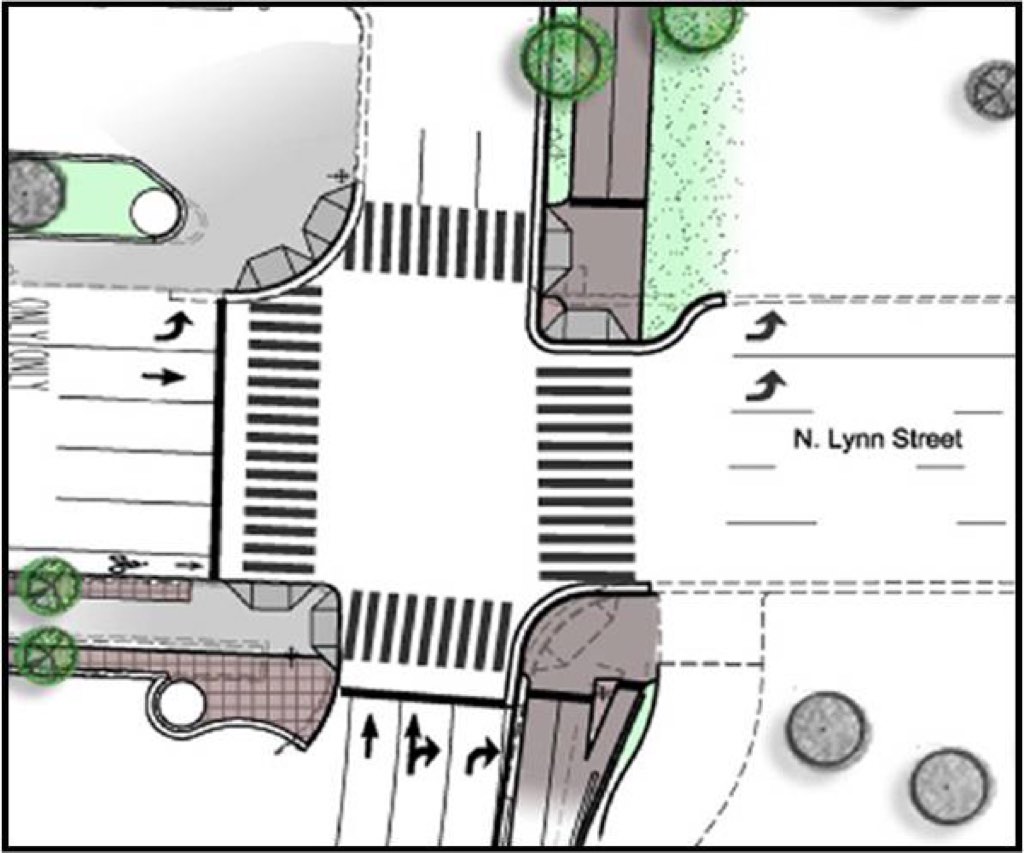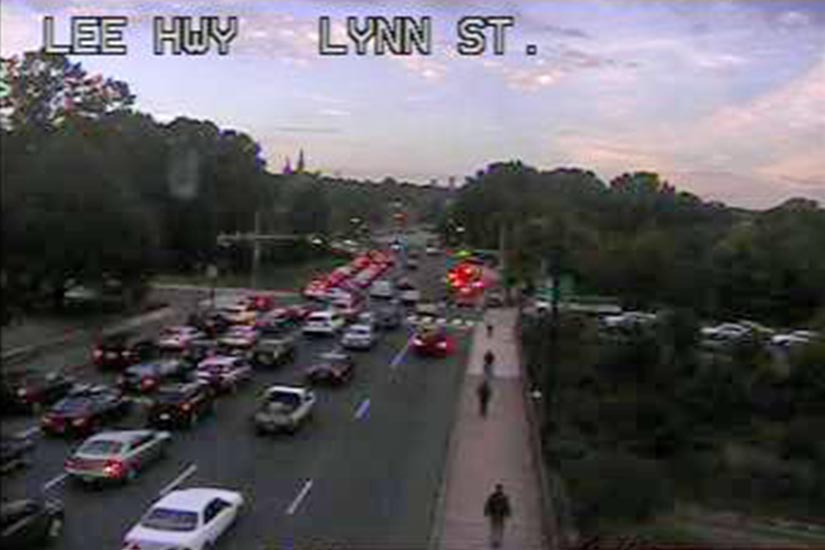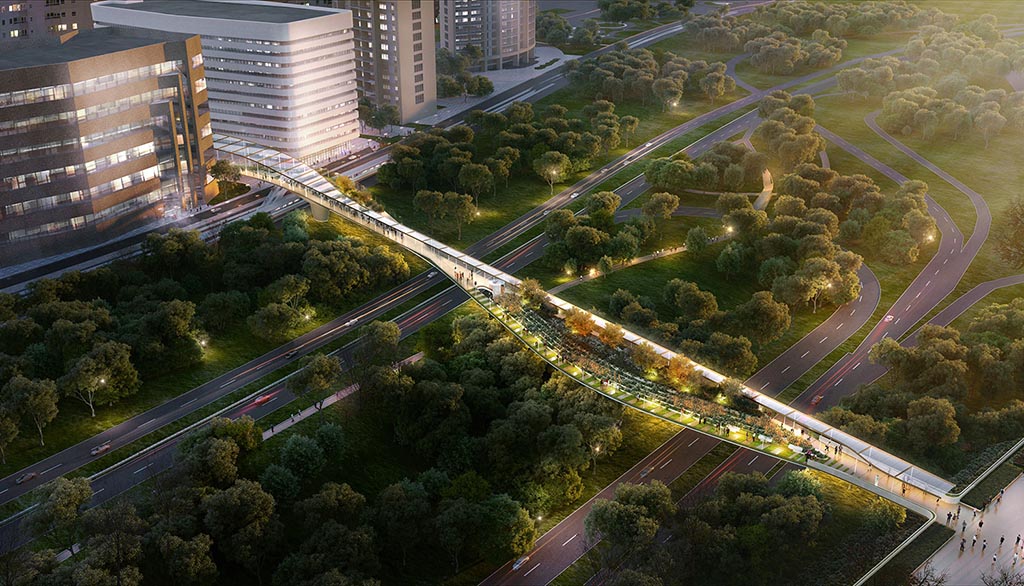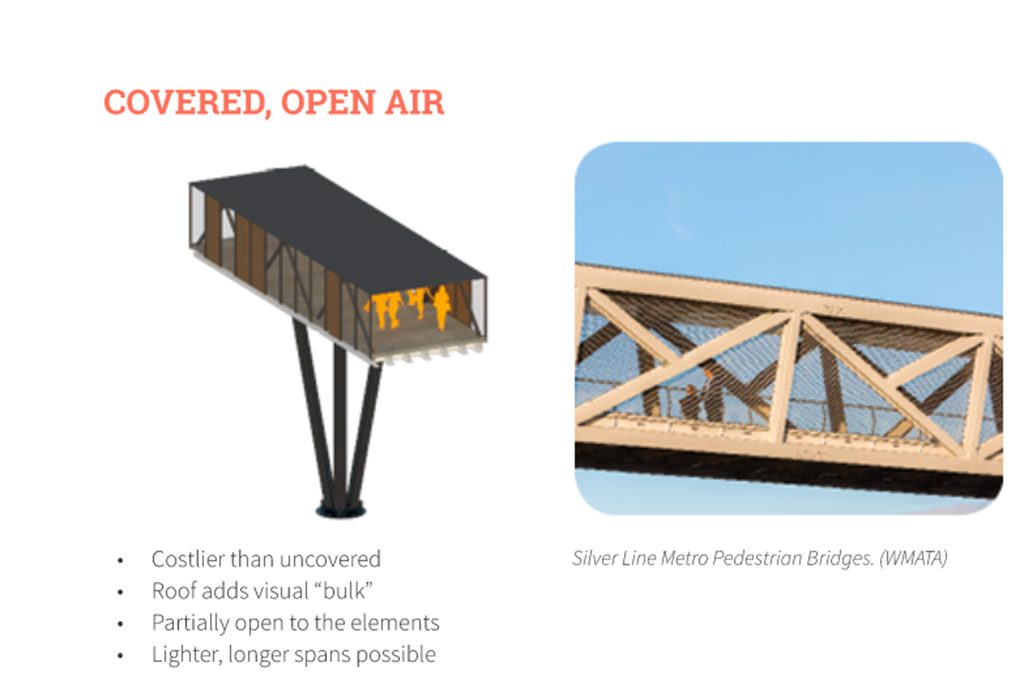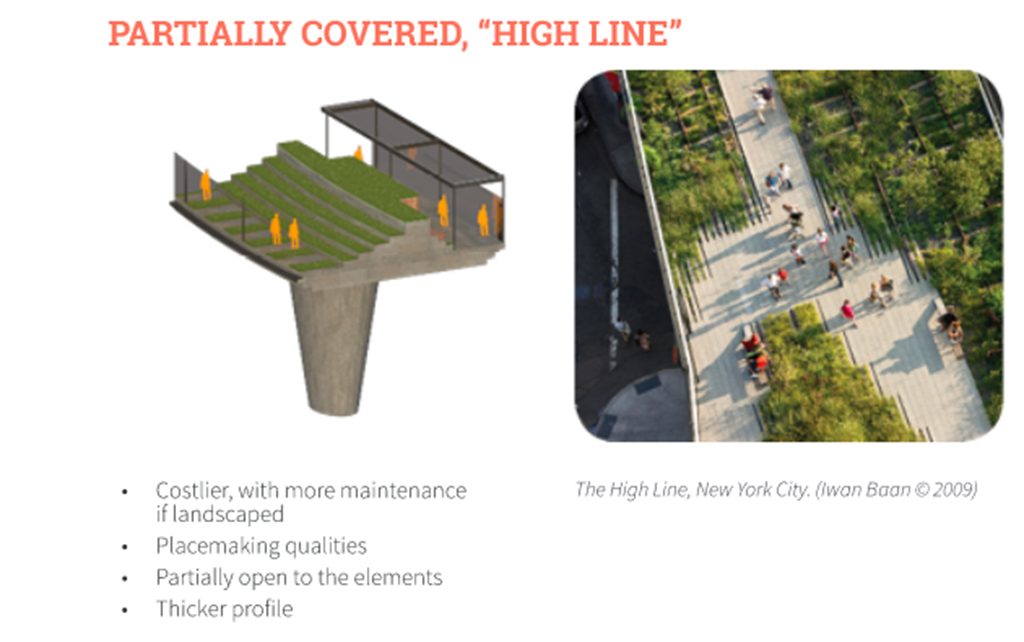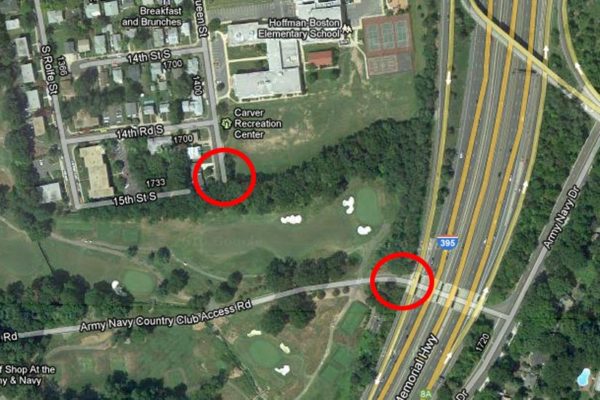
County officials seem to have found some money to speed up design work on an access road to link the Arlington View neighborhood to Army Navy Drive.
County Manager Mark Schwartz initially proposed some hefty delays for the project, which is set to stretch across a section of the Army Navy Country Club, in his proposed 10-year plan for county construction efforts. Under his proposal, design work on the effort wouldn’t even start until fiscal year 2027, with construction set for 2029.
The county’s budget challenges have ensured that Arlington officials haven’t suddenly found enough money to build the road, and its accompanying bike and pedestrian trails, right away. But county staff did manage to track down about $230,000 to pay for design and engineering work starting in fiscal year 2020, officials told the County Board during a work session Tuesday (July 10).
That news is quite welcome for Board members and residents alike, considering that the county has been working to build the 30-foot-wide road since 2010, in order to better connect Columbia Pike to Crystal City.
The road would run from S. Queen Street, near Hoffman-Boston Elementary, to the I-395 underpass, where a country club access road meets up with Army Navy Drive. The process of securing an easement to even cross the country club in the first place was a challenging one for the county, but the two sides ultimately struck a deal after the county agreed to allow the club to build a larger clubhouse than county zoning rules would ordinarily permit.
Staff cautioned the Board that reallocating this money for design work won’t do anything to change when the project gets built, at least for the time being. But members supported the change all the same as a way to provide some more detailed plans for the Board to consider a few years from now, when the county’s fiscal picture could improve.
“At least it’s getting us somewhere,” said Board member Erik Gutshall. “We’ve got to move the ball forward.”
In order to get that design work moving, the Board would need to pull $105,000 away from some minor arterial road projects over the next two fiscal years, and another $125,000 away from the “Walk Arlington” program for pedestrian-centric projects. The latter move will leave just $50,000 available for the program in 2020 and 2021.
But Board members seem to believe the funding shake-up is well worth it, particularly as bicycling advocates stress the importance of the project.
“There is a compelling case to be made that this will allow one of our largest growing population centers, Columbia Pike, to have more access to one of our major commercial and office centers of Crystal City,” Board Chair Katie Cristol said. “The most important thing is we get the scope of this proiect to the point where we can have those conversations about feasibility.”
County transportation director Dennis Leach cautioned that additional examinations of the project could reveal that it’s too challenging for the county to pursue. He noted that the “steep grades” in the area, combined with its proximity to woodlands and I-395, could all combine to make the effort “extremely expensive.”
Initial estimates pegged construction costs around $5.2 million, but the county hasn’t updated that figure in years.
Cristol added that there are also “big questions” about whether the county can afford to bring the project into compliance with federal accessibility laws. However, she did suggest that one avenue for addressing those cost concerns might be redirecting some revenue generated by the commercial and industrial property tax on Crystal City businesses, as the area would potentially stand to benefit from the project.
“I look forward to the prospect of a taking a better scoped project and having a conversation with the business community about whether it’s a proper use of that tax money,” Cristol said.
The Board will make the reallocation of money for the access road official when it votes to approve a final Capital Improvement Plan on Saturday (July 14).
Photo via Google Maps


